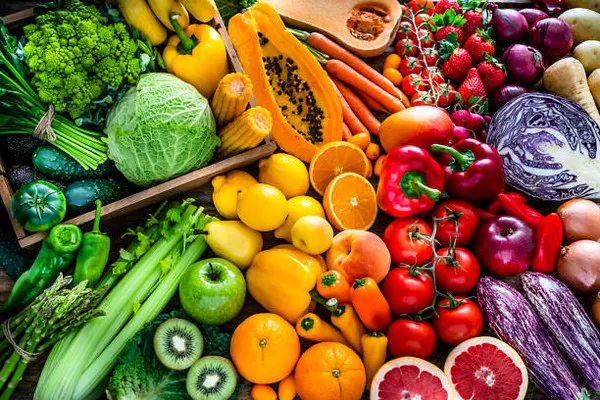In the quest for a healthier diet, many people seek advice on the best ways to prepare vegetables. As a dietitian, Carlene Thomas encounters two primary groups of people: those aiming to optimize their nutritional intake and those simply looking to incorporate more vegetables into their meals. Her straightforward advice to both is clear: the best vegetables are the ones you’ll actually eat.
Many people buy vegetables with good intentions, only to find them forgotten in the fridge, unused. As Thomas points out, it doesn’t matter how vegetables are cooked if they end up in the trash. For a diet to be successful, the food must be both nutritious and enjoyable.
Do Cooking Methods Affect Nutritional Value?
The answer is yes. Research shows that the way vegetables are prepared can indeed influence their nutrient content, but it’s more nuanced than simply choosing between raw or cooked vegetables. Cooking has both pros and cons when it comes to preserving nutrients.
While high-heat cooking for extended periods can degrade certain vitamins, such as Vitamin C, it also has the benefit of making vegetables more digestible and increasing nutrient bioavailability. This means that cooking can actually enhance the absorption of some nutrients. For example, cooked tomatoes release more lycopene, a potent antioxidant linked to cancer prevention, while cooked carrots offer increased levels of beta-carotene, which the body can absorb more effectively than in their raw form.
Additionally, cooking methods like roasting can amplify the nutritional benefits of carotenoids—antioxidants found in vegetables like pumpkins, carrots, and sweet potatoes, known for their anti-inflammatory properties.
Which Cooking Methods Preserve Nutrients?
Dietitians generally agree that shorter cooking times help retain more nutrients. Methods like steaming and microwaving are among the best for preserving nutritional content, as they involve minimal heat and no added fat. According to Amber Pankonin, a dietitian from Lincoln, Nebraska, these methods are the healthiest since they maintain the integrity of the vitamins and minerals within the vegetables.
On the other hand, blanching, which involves briefly plunging vegetables into boiling water, is also a good option. However, it’s important to limit the time vegetables spend in the water to prevent nutrient loss, particularly of water-soluble vitamins like vitamin C and folate. Boiling, while easy, can often lead to a significant loss of nutrients as they leach into the water.
Adding Fat: A Healthy Approach?
While many people avoid fats in an effort to eat healthier, dietitians agree that using a small amount of fat in cooking is perfectly acceptable and can actually enhance the nutritional benefits of vegetables. A little oil can help the body absorb fat-soluble vitamins such as vitamin A from carrots, vitamin D from mushrooms, vitamin E from bell peppers, and vitamin K from leafy greens.
Pankonin suggests using around a tablespoon of oil for sautéing vegetables over medium heat, ensuring they don’t stick but avoiding excess oil. For roasting, you’ll likely need to use more oil, but the added time in the oven allows for the caramelization of natural sugars, enriching both flavor and nutritional value.
As Pankonin explains, “Flavor is king.” She advocates for methods like roasting, where the vegetables caramelize and develop deeper flavors, making them more appetizing. In contrast, boiling can result in bland, mushy vegetables that are less enjoyable to eat.
Simple Recipes to Try
For those looking to incorporate more vegetables into their meals, here are two delicious and nutritious recipes:
Amber Pankonin’s Sautéed Green Beans with Lemon, Garlic, and Shallots
- Serves: 4
- Time: 20 minutes
Ingredients:
- 12 oz trimmed fresh green beans
- 1 Tbsp vegetable oil
- 1 Tbsp minced shallot
- 1 tsp minced garlic
- 1 Tbsp lemon juice
- Kosher salt and black pepper
Directions:
- Blanch the green beans in boiling water for 1 minute, then drain and place in an ice water bath.
- In a sauté pan, heat oil over medium-high heat and cook shallots for 30-45 seconds.
- Add the green beans and cook for 2-3 minutes.
- Add garlic and cook for 1-2 minutes until beans are tender.
- Season with lemon juice, kosher salt, and black pepper to taste.
Carlene Thomas’ Twice-Baked Harissa Sweet Potatoes
- Serves: 6
- Time: 1 hour, 10 minutes
Ingredients:
- 3 large sweet potatoes
- 1 ½ tsp brown sugar
- 1 Tbsp melted butter
- 2 tsp harissa
- Salt and pepper to taste
- 2 tsp extra-virgin olive oil
Directions:
- Preheat the oven to 375°F. Wash and prick the sweet potatoes, then bake for 45 minutes or until tender.
- Allow potatoes to cool slightly, then cut off the top third and scoop out the flesh, leaving enough to hold the shape.
- Mix the potato flesh with brown sugar, harissa, salt, and pepper in a stand mixer.
- Scoop the mixture back into the skins, creating peaks with a fork.
- Brush the potato skins with olive oil and bake at 350°F for 25 minutes. Optionally, broil to brown.
- Serve with additional harissa and salt.
Ultimately, the healthiest way to prepare vegetables is the one that fits into your lifestyle and tastes best. Whether steaming, roasting, or adding a dash of oil, finding enjoyable methods to cook your vegetables will help you incorporate more of them into your diet and reap their full nutritional benefits.
Related Topics:
Can Sparkling Water Help Supercharge Your Weight Loss?


